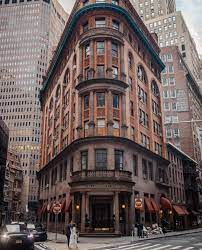Description
Introduction:
As of my last update in September 2021, “FiDi NYC” typically refers to the Financial District in New York City. The Financial District, often abbreviated as “FiDi,” is a neighborhood located at the southern tip of Manhattan, New York City. It holds significant historical and economic importance, being the heart of the city’s financial activities for centuries.
Historical Significance:
The Financial District has a rich history that dates back to the early days of New York City. It was the site of the original Dutch settlement known as New Amsterdam, and the area was developed and expanded over the years. Wall Street, one of the most famous streets in the world, runs through this district and has become synonymous with the financial markets and economic power.
Economic Center:
The Fidi NYC is renowned as one of the world’s leading financial centers, housing the headquarters of major financial institutions, investment banks, and stock exchanges. The New York Stock Exchange (NYSE) and the Federal Reserve Bank of New York are both located in this area. The concentration of financial power and institutions in the district has contributed significantly to the growth of New York City’s economy and global influence.
Skyscrapers and Architecture:
The Financial District boasts an iconic skyline dominated by skyscrapers. Some of the most famous buildings include One World Trade Center (Freedom Tower), 40 Wall Street (The Trump Building), 70 Pine Street, and the Woolworth Building. These architectural marvels represent the evolution of New York City’s skyline over the years.
Tourist Attractions:
Apart from being a hub for financial activities, FiDi attracts tourists from around the world. Many visitors come to see landmarks such as the Charging Bull statue, representing the financial optimism of Wall Street, and the Fearless Girl statue, symbolizing gender diversity and women’s empowerment in corporate leadership.
Cultural and Historical Sites:
The district is not only about finances; it also has cultural and historical sites worth exploring. The South Street Seaport Museum offers a glimpse into the maritime history of the city. Trinity Church, St. Paul’s Chapel, and the National September 11 Memorial & Museum provide a connection to the area’s past, particularly during the tragic events of September 11, 2001.
Transportation Hub:
FiDi is well-connected to other parts of New York City through various transportation options. The area has several subway lines, making it easily accessible to residents, workers, and tourists alike.
Residential Area:
In recent years, FiDi has experienced a transformation into a residential neighborhood. Previously known for its bustling business environment, more people now choose to live in the area due to its proximity to work and its growing amenities, including shops, restaurants, and parks.
Recovery from 9/11:
The Financial District went through a significant recovery process after the September 11, 2001 terrorist attacks that caused the destruction of the World Trade Center. The reconstruction efforts led to the creation of the One World Trade Center (Freedom Tower) and the 9/11 Memorial, both symbols of resilience and remembrance.
Overall, the Financial District, or The FiDi NYC, holds a special place in the hearts of New Yorkers and visitors as a crucial economic center, a historical treasure, and a testament to the city’s spirit and determination. Its unique blend of finance, culture, and history makes it a must-visit destination for anyone exploring New York City.
Branch
The Fidi NYC


